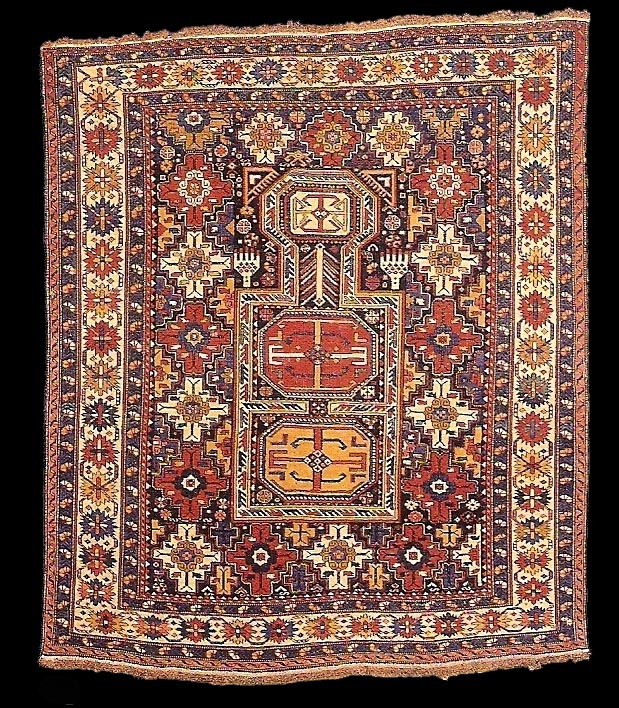|
283, KUBA RUG
nineteenth centurv
4'1" x 4'10" (124 x 147 cm) These design elements could have been used in
many localities, from the Kuba district to the weaving villages of Shirvan,
but the deeply depressed alternate warps suggest a northern origin.
Warp: wool 3 strands. Weft: wool 2 strands, 2 shoots. Pile: wool, 2 strands.
Knot: symmetrical, alternate warps deeply depressed, h.12, v.14, 168 / in2
(h.48, v.56, 2688 / dm2). Edges: white cotton reinforced selvage over 4
warps for most of the rug.
published at Murray L Eiland Jr. & Murray Eiland III's "Oriental Rugs
A Complete Guide".
Plate no: 283

Rugs with a mihrab in the shape of a keyhole or a stylized 'head and
shoulders' figure were woven throughout east Caucasia, with published
examples from Baku, Kuba, Shirvan, Daghestan and Chichi. Unlike most
Caucasian prayer rugs those in the 'keyhole' and 'head and shoulders' group
do not have a separate gabled or squared prayer arch; instead, the mihrab
floats on the field. This design principle is more closely related to the
style of prayer rugs from Anatolia. The 'head' or prayer arch in these rugs
is virtually identical in shape to the re-entrant arches of Anatolian 'Bellini-type'
rugs of the fifteenth to eighteenth century. (These rugs are so called
because of the paintings of Gentile Bellini. c.1429-1507, who depicted rugs
with keyhole or re-entrant motifs) The more immediate influences are the
later keyhole rugs from Bergama and Konya. A wide variety of borders is
employed in this group of rugs, varying primarily by origin. Border patterns
include a polychromatic slanted 'barber pole' (Baku), slanted
bars-and-rosettes (Chichi), geometric guls with 'c' motifs (Kuba) and
crab borders (usually Shirvan or Daghestan) as in the pieces shown here. |

